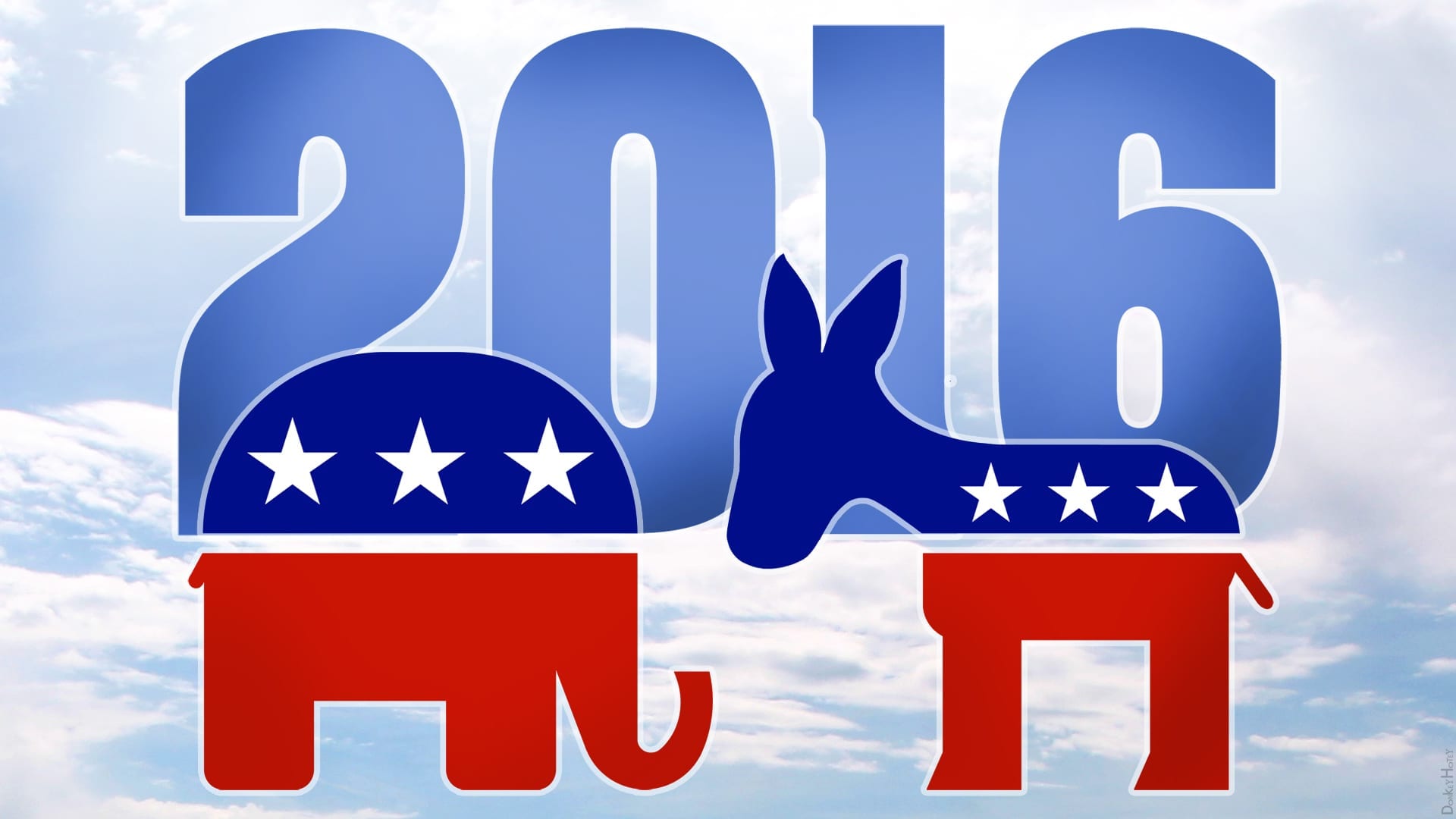President-elect Donald J. Trump: the media
In the third-of-five in the fifth installment of a five-part series analyzing each Presidential candidate’s policies, Samantha Lindsay dissects the polls and the media.

https://www.flickr.com/photos/donkeyhotey/24101702220/in/photolist-CHMwo1-JJBqbo-JfqXJj-HtipDo-EmeBfD-q2LvvN-4EjNgb-hmzdu9-pFhzks-q4cpTN-rfqjvv-qb6LLi-q4cTcY-hFgVz7-hFhnAV-HPBQTn-fw4bh2-qXV8Bc-H9ycLj-j4Mzc2-qTskgB-DGFjYr-jc1Ah1-DdGiqr-E7VzQR-qFKZcy-pvL18H-aK7mXD-E7VA8z-CKwfkh-rMrUHE-rBeoWw-dhh6C5-rPZNZd-s7s6xE-dfrMXk-DuGv5d-DajVcb-fw4bfZ-GfbhE9-q3yPGu-oykALh-HV12FW-qb5h4H-CKwgN7-EfaRhe-jP8E6c-nWr2DW-DUbqVj-rQ8WnK
Written by Samantha Lindsay
The following report is the third-of-five in the fifth installment in a series presenting a comparative analysis of select legislative proposals that were a part of the platforms of the two major candidates in the 2016 presidential election; Democrat (D) Hillary Rodham Clinton and Republican (R), Donald J. Trump. In the four previous installments published before the election, I addressed the candidates’ positions on the issues of paid family leave, the economy, gun control, and the Affordable Care Act.
This series is not an endorsement of either candidate.
The Polls and the Media
On November 7th, Quinnipiac published the results of a poll showing Clinton in the lead in the state of North Carolina with 47 percent to Trump’s 45 percent. Politico reports that Trump won the state with 50.5 percent of the vote. According to the same poll conducted by Quinnipiac, only 37 percent of likely female voters in the state supported Trump. According to a CNN exit poll, which questioned 4,297 respondents in North Carolina on the day of the election, 45 percent of female voters, voted for Trump.
As a general rule, the margin of error in an election poll is supposed to be +/- 4 percent. The above cited Quinnipiac poll claimed a margin of error of +/- 3.3 percent. The poll was off by 5.5 percent statewide and by a margin of 8 percent in their poll of likely female voters.
Conducted correctly, election polls with a large enough sample size to be representative of the population can be fairly accurate. However, election polling is not an exact science; therefore, the difference between the claimed margin of error and the actual margin of error would be understandable if the Quinnipiac poll were an anomaly.
To the great surprise of many voters, the errors made by Quinnipiac were not an exception during this election season; they were the rule. For example, in every poll included in the Real Clear Politics average of polls conducted over a period of four months, Clinton had a lead in the state of Wisconsin with a final polling average of +6 percent. According to Politico, Trump won the state of Wisconsin by a margin of one-percent.
These polls are the reason FiveThirtyEight gave Clinton a 71.4 percent chance of winning the election and predicted that Trump would lose the battleground states of Florida, North Carolina, Pennsylvania, Michigan and Wisconsin; all of which Trump won. These polling errors beg the question, “How could the predictions made by so many professional polling agencies have been so wrong about the outcome of this election?” I think the evidence suggests that the errors made were due to the focus of their polls, which were largely media driven.
The Media
According to a post-election Rasmussen report, by Fran Coombs, “The media created a false narrative about the 2016 presidential campaign, and most polling reinforced it. Controversy was the name of the media game…and many pollsters were saying little over a month ago that Democrat Hillary Clinton had already won.”
On television and in news publications, the entire focus of the election was a competition of personalities and character deficiencies while the media inundated the voting public with one scandalous story after another. Meanwhile, a study conducted by the Harvard Kennedy School’s Shorenstein Center on Media, Politics and Public Policy found that only eight percent of the media’s coverage of the campaigns focused on the issues.
Two weeks before the election on Oct. 25, Just Facts published a survey that measured “voters’ knowledge of issues that affect their lives in tangible ways.” Unlike the majority of polls that seek to measure public opinion, the Just Facts poll was a test of public knowledge. They found that overall 43 percent of Trump’s voters and 31 percent of Clinton’s voters had factual knowledge about the issues. This situation might have been different if the media had focused on the issues rather than the candidate’s personalities.
To be fair, both candidates were entangled in multiple scandals and the public did not approve. As this Aug. 11, Gallup poll indicates, Trump’s and Clinton’s approval ratings were exceptionally low at 32 and 39 percent respectively. It is also true that the public has a right to know the character of the individuals that they are considering for the presidency. Nevertheless, as this Oct. 19, Rasmussen report found, Sixty-two percent of voters say policies are more important to their vote than a candidate’s character.
In the opinion of this writer, the media did us all a disservice by hyper-sensationalizing scandals while downplaying the importance of the issues. By doing so, they created the illusion that Clinton was heading for a landslide victory against Trump who had lower overall approval ratings as reflected in the majority of the polls. Additionally, their focus on scandals to the exclusion of the issues helped to create a polarizing environment wherein Clinton’s supporters have little understanding of the issues that are important to Trump’s voters, and they have become understandably angry in the aftermath of the election.
The next part of this installment will focus on Trump’s electorate and the media.
Edited by Ben Webb
Featured image by DonkeyHotey on Flickr, obtained using creativecommons.org



